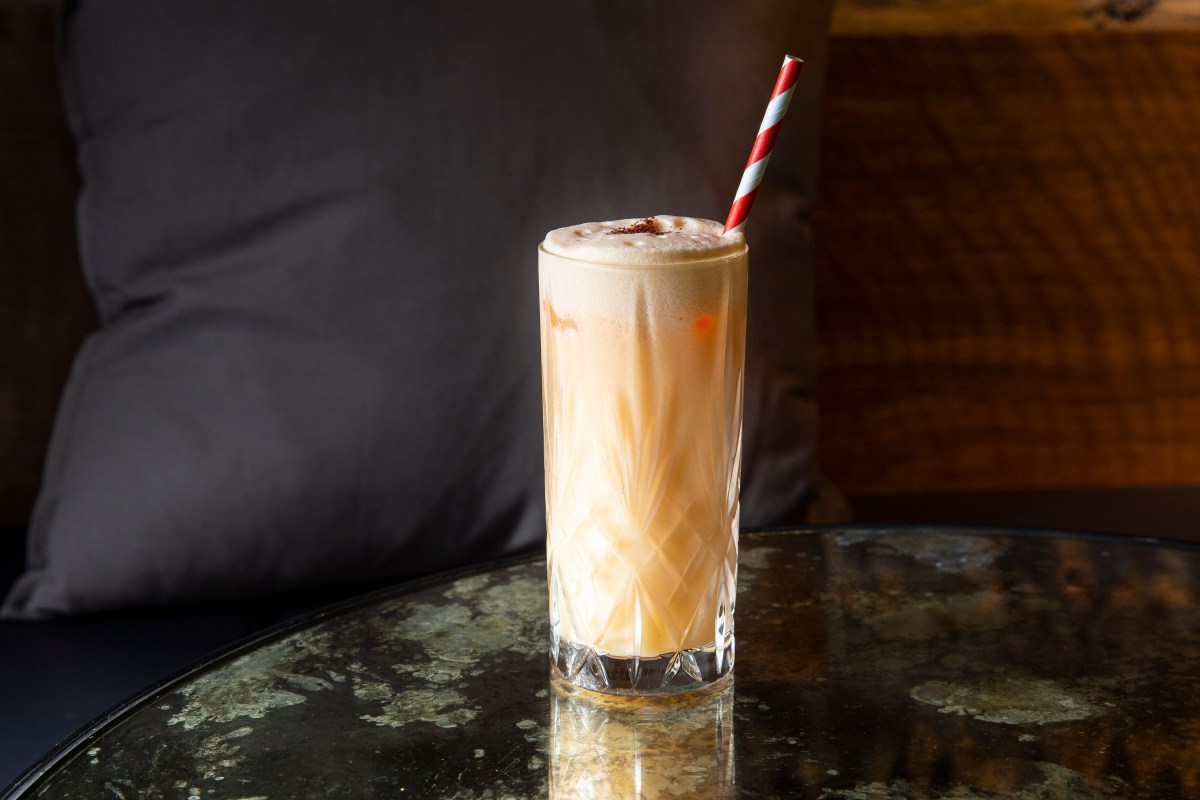The line between restaurant and bar has blurred, but the boundaries between staff often remain intact. While there are logical reasons for the divide — they are two different worlds with different demands, after all — there are rewards for those willing to collaborate.
Xander Ramirez, bar manager at Tayim in Sydney’s The Rocks says time is the biggest barrier. Kitchens and bars tend to keep different hours, and so do their staff. There are physical constraints, too, especially at bigger establishments. “In my experience, you don’t have the opportunity to get to know each other,” says Ramirez. “You’re always going to be tucked away at the bar or on the floor selling cocktails and the head chef is going to be in the kitchen.”
Time and physical barriers are one thing, language and culture are another. Ultimately, the former can be accommodated if the two teams are willing. Success in this respect is dependent on leadership. Ramirez has established a rapport with Tayim head chef Ran Kimelfeld based on a mutual goal. “Chef Ran and I share an ideology,” he says. “We want the beverage and food offering to be as premium as possible and as authentic as possible.”
Surprisingly, the solution is to take a less structured approach. “Our process is quite casual and depends on our schedules,” says Ramirez. “It could be just us sitting down in the office, doing some ordering together for the next day or having a casual conversation.”
At other times, it becomes the focus of staff meals, which bring chefs and bartenders together in an ideal world. “[We] talk about flavours or ideas when we’re all sitting down,” says Ramirez. “We talk about where we want to take the direction of Tayim’s beverage and food.” At Green Moustache, the bar team come to the chefs with ideas, who see how they can help. Requests have varied from honeycomb to fruit roll-ups.
Head chef Pete Fitzsimmons is honest about what his team can achieve given the demands of service. Some requests can take the kitchen’s workload to an unreasonable level. Others, such as a honeycomb garnish, are no problem. “I use honeycomb in a dessert, [but] it’s a different style; one that naturally aerates and puffs up,” he says. “The one they use in the bar needs to be rolled out, so it’s thin and not so intense. Ultimately, it’s the same recipe with some changes to the final steps, so it doesn’t stretch the kitchen team.”
And when chefs don’t have the capacity, they open the kitchen up to the bar team — within reason. “If they want to come in and use the kitchen outside of service time, they can,” says Fitzsimmons. The chef has also passed unneeded equipment on to the bar team, too, facilitating even more experimentation.
In return, the bar team has stepped up to the challenge. “They know how to make their own caramels and all that sort of stuff,” says Fitzsimmons. “They’ve come to me with a couple of things I’ve never done before, fruit roll-ups for example, which I could research and learn to do, but they’ve had a go and mastered it.”
Green Moustache bar supervisor Marcella Guilfoyle developed a fruit roll-up recipe and other garnishes, using kitchen equipment such as a dehydrator.
However, she’s quick to point out a good relationship between kitchen and bar staff is what’s allowed the team to learn. “Open communication needs to be there so when someone needs help they can ask for it.”
The results speak for themselves. By working together, Kimelfeld and Ramirez have been able to create a more harmonious relationship between the
cocktail list and the menu. “Chef Ran has changed the way I understand a cuisine I don’t know much about,” says Ramirez. “He’s able to explain flavour combinations in a way that I can understand. It’s almost like he’s giving his past experiences when he describes flavours.”
The stories give Ramirez a greater understanding of the ingredients he’s working with and the pair are able to create an experience where cocktails and food truly complement each other. In some cases, Kimelfeld has even taught Ramirez techniques to help incorporate flavours. Ramirez says the Little Ramos is emblematic of the relationship. A twist on one of his favourite classics, a Ramos Gin Fizz, the drink pays homage to cocktail canon while serving up a libation that suits its environment. “I incorporated fermented chilli, which is used in our dishes,” he says. Kimelfeld also taught Ramirez how to make the ingredient.
Inspiration from the kitchen has allowed Green Moustache bartenders to get creative with garnishes, leading to more complex cocktails and a unique drinking experience.
A strawberry roll-up made with peppercorns and lemon juice makes for an interesting combination of flavours when paired with Glenfiddich and strawberry tonic. Honeycomb sweetens the smoky flavours of the After Hours, which features Zacapa 23, Laphroaig and salted caramel. And a salty garnish of air-dried beef — courtesy of the kitchen — and maraschino cherry balances the bitter-sweet symphony of the Not a Negroni, which combines Woodford Reserve, Amaro Nonino, Averna and bitters.
Essentially, more complex, chef-like garnishes help the bar team develop more intriguing ways to infuse their drinks with a multitude of qualities. The benefits of a tightknit venue are evident in the outcome — Tayim and Green Moustache have been able to up their cocktail games thanks to kitchen collaboration.
Given the effect on both culture and drinks is undeniably positive, a close relationship between kitchen and bar should be the norm. “Guests can benefit from a good relationship [between the two],” says Ramirez. “Unfortunately, it’s not common enough.”
Image: Tayim’s Little Ramos
This article originally appeared in the August of Hospitality.

